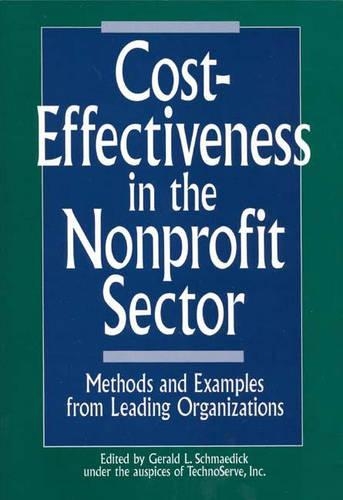
Cost-Effectiveness in the Nonprofit Sector: Methods and Examples from Leading Organizations
(Hardback)
Publishing Details
Cost-Effectiveness in the Nonprofit Sector: Methods and Examples from Leading Organizations
By (Author) Gerald L. Schmaedick
Bloomsbury Publishing PLC
Praeger Publishers Inc
30th March 1993
United States
Classifications
Tertiary Education
Non Fiction
Social welfare, social policy and social services
658.048
Physical Properties
Hardback
208
Description
This work not only makes the case that responsible nonprofit managers must routinely utilise cost-effectiveness analysis, but also gives many examples of how it can be done. The examples are drawn from prestigious nonprofit organisations as varied as the National Gallery of Art, Girls Inc, and the Nature Conservancy. Drawing on TechnoServe's search for a practical methodology to measure the cost-effectiveness of its own work, Schmaedick provides a synthesis of the principles of cost-effectiveness analysis in the opening chapter. The guidelines he provides are almost universally applicable and make cost-effective management an attainable goal. Rather than subject the reader to arcane explanations of intricate mathematical formulae, Schmaedick provides practical directions for nonprofit managers. Those seriously interested in upgrading the management systems of their organisations, to produce more results at lower costs, should find this a challenging, but not intimidating, prescription.
Author Bio
GERALD L. SCHMAEDICK is the Vice President for Research and Development of TechnoServe, Inc. He was promoted to this position after serving for twelve years as TechnoServe's Vice President for Latin America. Mr. Schmaedick has served as consultant to the World Bank, U.S. Agency for International Development, and the InterAmerican Development Bank on assignments in Asia, Africa, and Latin America. He was contributing author to The World Food Budget--1970 (1965) and An Evaluation of the Food for Peace Program (1972). He is an economist and a member of the American Economics Association and the American Agriculture Economics Association.
